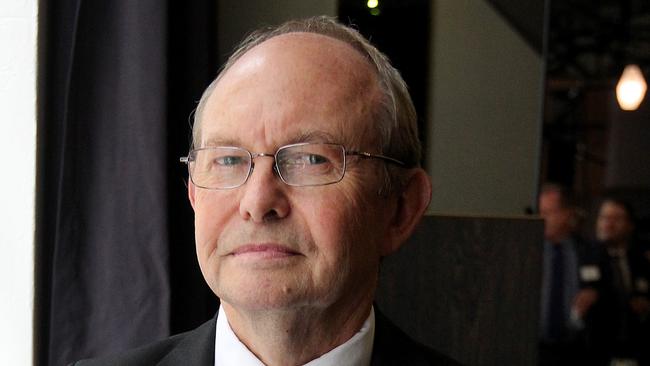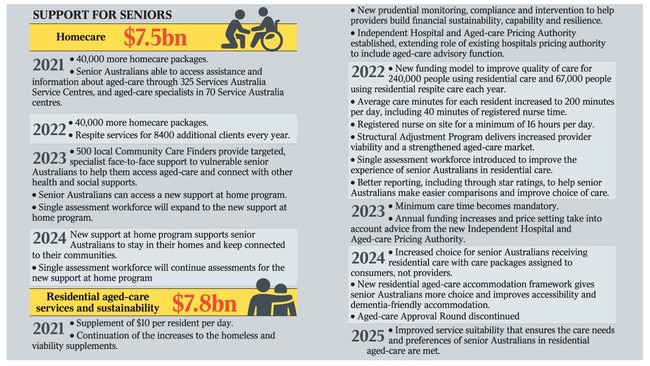Budget 2021: Time’s up for second-rate homes
Poor-performing nursing homes will be driven out of the market by the proposed reforms of the sector that will assign aged-care funding directly to consumers and not to providers by 2024.

Poor-performing nursing homes will be driven out of the market by the proposed reforms of the sector that will assign aged-care funding directly to consumers and not to providers by 2024, according to a former official who oversaw a major sector review a decade ago.
Mike Woods, the former Productivity Commissioner who led the Caring for Older Australians inquiry in 2011, said the change would reward better performing providers by driving competition.
Under the changes, which come into effect in July 2024, government funding for residential aged care will be allocated to consumer preferences and not attached to the number of beds in nursing homes, giving older Australians more say where they go.
The change is the single most significant structural change in the government’s reforms — which include $17.7bn in additional funding over the next five years and came after a damning royal commission into the aged-care sector.
Professor Woods, who led a review into the allocation of residential aged-care places for the Health Department last year, said the government had for years been eager to shift funding out of the hands of providers and to consumers, and had been given the chance to by the royal commission.
“At present if you are a good provider you can’t take a commercial risk and add licences, but a poor provider with bed licences will continue to have occupancy almost guaranteed because of lack of supply,” Professor Woods said.
“The new system will drive competition and give consumers more choice and control.”
There are about 240,000 people in residential aged care each year, and the new system will mean providers are no longer bound by approvals for licences.
The package, announced in Tuesday’s budget, included $6.5bn to build more home-care capacity, the overwhelming aged-care preference of Australians, with 80,000 new home-care packages to be funded over the next two years.
And $7.8bn was committed to improving care, including a $10 per day per resident boost to the daily care fee from July, and mandated minimum levels of care time per resident starting in late 2023.
Much of the response answered the 148 recommendations of the aged-care royal commission, with government accepting either in full or in principle 126 of them.
But the move to end the nursing home bed licence system was a government initiative and not driven by the commission. Nevertheless it drew support from consumer groups and even aged-care providers.

Hammond Care chief executive Mike Baird said any policy change that gave people more power to decide the services they need was welcome. “It will give providers the opportunity to look at expanding into new markets, and this will bring more choice for consumers,” he said.
Older Persons Advocacy Network chief executive Craig Gear, who represents consumers, said it was time to let older Australians control their own care. “Older people have run businesses, they’ve run their homes, but as soon as they get to the residential aged-care system their choice and control gets checked at the door,” Mr Gear said.
But the aged-care package overall drew criticism from Labor spokeswoman Clare O’Neil, who said there was no plan on how the government would deliver a workforce to support the additional 80,000 home-care packages. Ms O’Neil also said she was concerned the $10 per person a day in additional funding was not tied specifically to nutrition despite studies repeatedly showing a significant number of aged-care residents were malnourished or at risk of malnourishment.
Seniors groups remain concerned that the 80,000 new home-care packages weren’t targeted at the highest level of need.



To join the conversation, please log in. Don't have an account? Register
Join the conversation, you are commenting as Logout